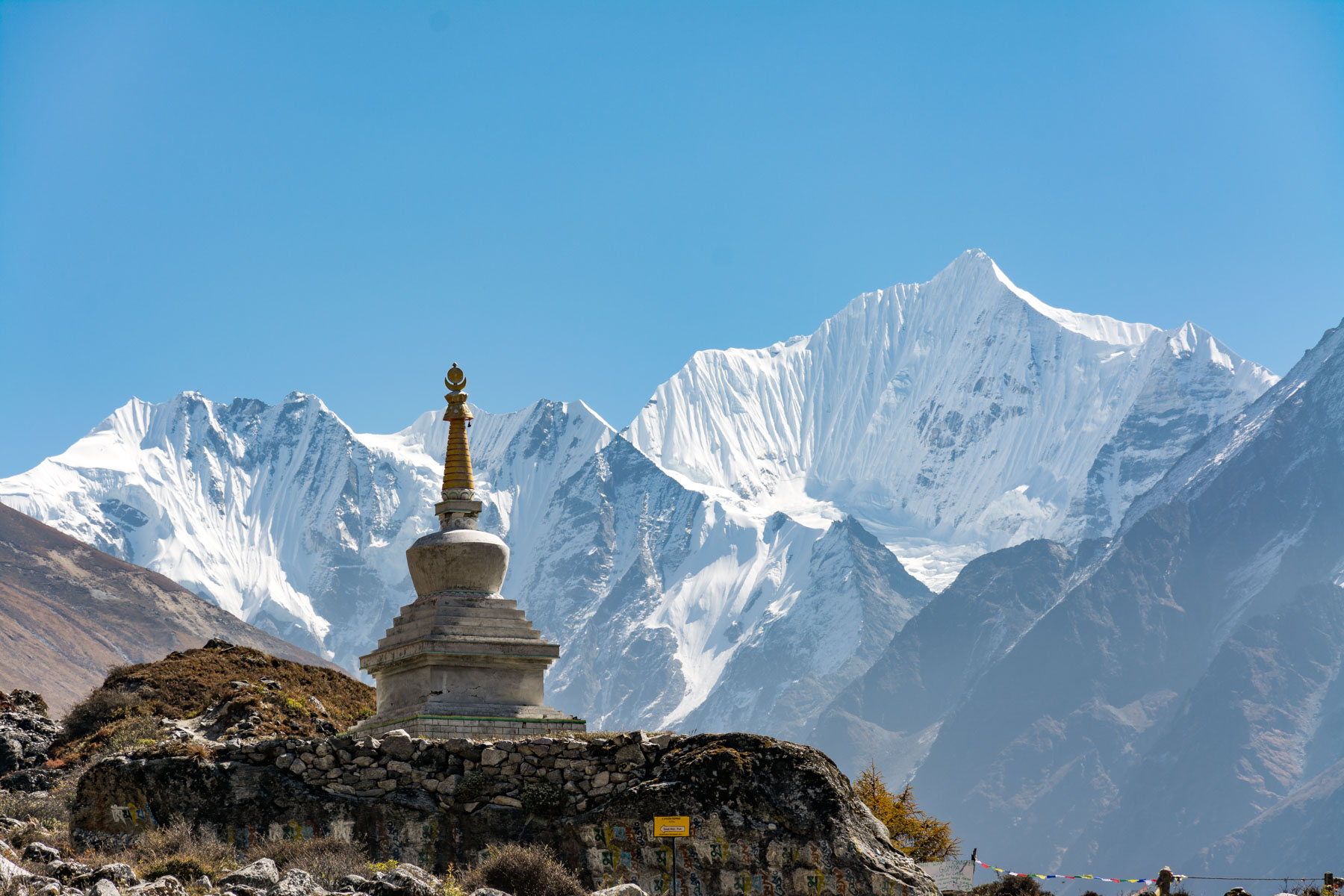
Each year we get a heap of questions mentioning how difficult is trekking in the Langtang region and what are the factors that make this trek challenging and so on.
Several factors determine the easiness of the trek. When you trek, how trained you are some of the significant ones.
Trekking in spring (March-May) and Autumn (September- November) adds more easiness whereas hiking in winter (December- February) and Monsoon (June – August) adds more challenges in this trial.
Because in the former two seasons have stable weather, constant temperature, the way is dry, the sky is clear and the magnificent views of the peaks are seen clearly.
However, in the latter two seasons, you may encounter unexpected rainfall or snowfall, astringent winds, muddy or snowy trail, the Siberian temperature in the winter make the trek more difficult.
Despite this, you should pass several ups and downs, rocky trails, walking in the lap of the Himalayas may add more challenges in the trek.
This article may guide you to know more about the factors that make Langtang Trek difficult.
A one who energies in high elevation above 2500meters of the sea level may encounter symptoms such as headaches, nausea, dizziness, and shortness of breath. This circumstance is known as Altitude Sickness.
Due to the high altitude, and thin air having less oxygen, many trekkers who live at the water level may face this problem which may well add some challenges in this trek.
Another important factor is trekking gears. The gears such as wool trousers/pants, heavyweight gloves, trekking/hiking boots, down jacket, thick woolen trekking socks, telescopic trekking/ski poles add easiness in the trekking.
In the inconvenience of them, the trek becomes quite challenging. So, it is suggested to carry all the needed gears with the help of your trekking guide.
This Langtang Trek is moderately difficult. Throughout the journey, we have to walk approximately 60-80 kilometers. For this, you should march 6-7 hours per day.
Next, you should pass many ups and downs following the rocky trials. You should encounter some landslide-prone areas on the way. The trail can be steep up and downs for some hours.
On the other hand, mental stress/condition plays a vital role in this trek. You will be missing your well-appointed bed, hot showers, and deluxe food as you are in the remote area. Fear of altitude sickness, not able to get to the top, and getting lost on the way create more difficulties in this trek.
This is another factor that decides the difficulty of the trek. If you plan to trek in Autumn (September to December) and Spring (March to May), it will be the best one. In these seasons, the skies are clear, views are panoramic, the way is less slippery weather is clear and the temperature is stable.
But in other seasons (winter and monsoon), the way is muddy or snowy, the weather and temperature get rapid change, the peaks are covered by the clouds. It makes the trek more difficult.
Trekking the Himalayas following the narrow rocky trail is not a race. If you do not acclimatize properly, the symptoms of Acute Mountain Sickness are highly possible.
Going above 2500meters the sea level lacks proper oxygen. Walking in the countryside in a thin layer of oxygen but the windy area can add a brick of difficulty.
Notwithstanding, the aforementioned points, several ways cooperate to reduce the difficulties of this trek. Some of the core is.
This is the key point. Local guides not only show the way but they explain the history, culture, tradition, and lifestyle therearound. The porters carry all your belongings that makes you comfortable to walk.
As you should walk 6-7 hours each day, practice some physical exercises such as cycling, jogging, running/walking, swimming, and so forth. This helps to make the trek successful.
Drink a lot of water. You can find several teahouses and teashops on the way to buy bottled water. But the price of such bottled water may get higher in the higher elevation.
Next, you can bring purification tablets, cholerine drops, or steripen to purify the water on the way.
It is suggested to drink 3-4 liters of water each day. Stay away from alcohol and drink less tea and coffee because they contain caffeine and can lead to dehydration. Instead, you can drink hot water.
Don’t forget walking poles because they are two extra legs. In the downhill, they help to make less burden to the thighs and knees. Next, they will be more supportive of the steep ascent.
Another factor to make a successful excursion is acclimatization. Moving to a higher elevation around 5000m from the sea level will not be easy as you are from the water level. Acclimatizing properly and moving to listen to your body supports to make the journey successful.
Walking in the lap of the Himalayas, exploring the culture, lifestyle of the people in the Himalayas, marching through the landscapes, lush forests and hamlets are the common features of the Langtang Valley Trek.
Preparing both physically and mentally well before planning the trek, acclimatizing properly, staying hydrate cooperates to make the journey successful and provides lifetime memory.
Leave Your Comment